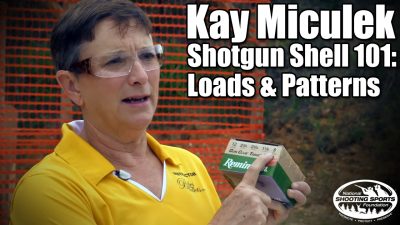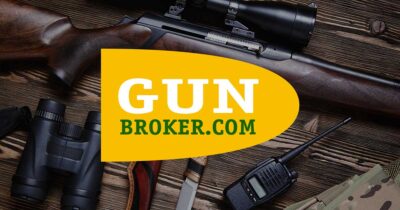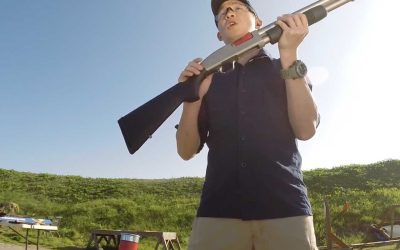Choosing Your First Shotgun
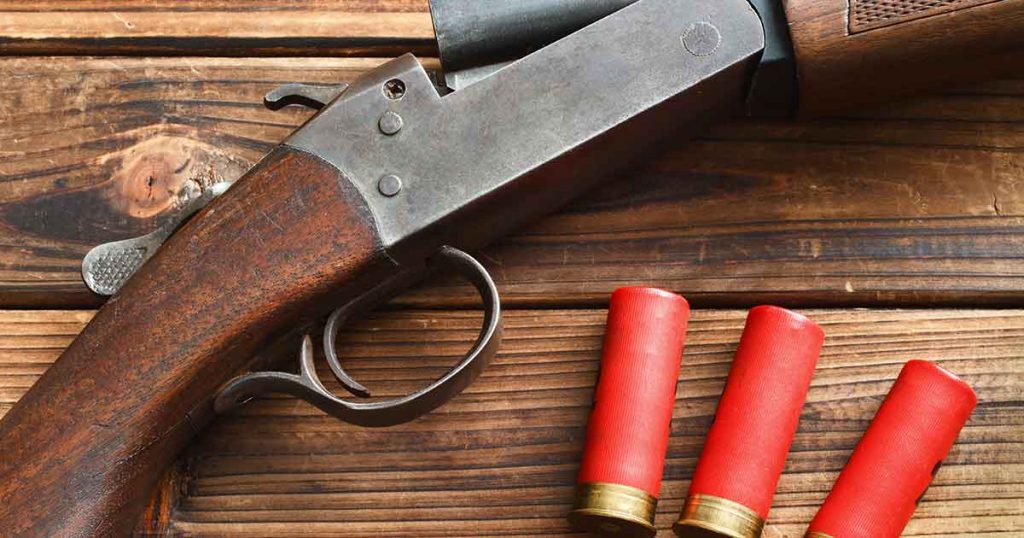
So, you are looking to purchase your first shotgun, but don’t have a great deal of knowledge or information, or even a place to start. There’s a lot to learn and hopefully this article will help.
Let’s begin with a little history.
The term, “shotgun,” was first used in 1776 to define a different type of firearm from a traditional musket. Prior to this time, what we call “shotguns” were referred to by the names Blunderbuss, Fowling Piece, Scattergun, Trench-gun and, from 1776 to modern time, the Shotgun.
Keeping this history lesson relatively short, it is generally understood that the first muskets used a smooth, rather than rifled bore. They were often loaded with lead balls, stones, and even bits and pieces of metal in order to increase their efficacy in battle. It did not take long before it was realized that this type of load could be an effective method of taking game – from small game to, especially, various species of fowl.
It was once those firearms became designed specifically to shoot shot rather than a single ball or projectile that the shotgun came into its own.
The original shotguns were loaded from the muzzle and had a powder charge followed by a shot card or wad material. Next, the desired shot was poured into the end of the barrel and another fiber card was pushed down on top of the load to provide the shot from falling out the end of the barrel. It wasn’t until the late 1800’s that a shotgun was devised that could load from the breech.
Today, there are basically four main types of sporting shotguns. They are the single shot, the double, the pump action and the semi-automatic. Drilling even further down, there are two types of doubles- the side-by-side and the over/under. Semi-automatic shotguns, while operating on a basic level in the same manner (with each pull of the trigger, a single shot is fired and the next shotshell loaded into battery), they are further broken down by the two main types of actions -the gas piston action and the inertia action. In the tactical world, there is also now a fully automatic shotgun, the AA-12, introduced in 2008.
Single Shot Shotguns
As you can likely tell from the name, a single shot shotgun is one that can only hold one shotshell at a time. After each firing of the shotgun, the action has to be opened, the empty shotshell removed, and another loaded one put in its place. It is also a “break-action” shotgun, meaning that the actual action of the shotgun is “broken open” to load and unload.
For many years, single-shot shotguns were the first shotgun for people due to their simple design, ease of maintenance, and often significantly lower cost. Thanks to manufacturing efficiencies that is now not always the case, but thousands of new shooters still take to the field with a single-shot shotgun every year. Additionally, many shotguns that are specialized for trapshooting are of the single-shot variety. Most often, these guns are used for small game hunting like squirrels and rabbits, but many a duck or pheasant has fallen to a trusty single-shot.
Some of the top examples of today’s single-shot shotguns include the Browning BT 99 and the Tristar TT-09, and Stoeger Grand Single (all 3 designed for the Trap Range), Thompson Center Encore, Henry SIngle-Shot, and H & R topper.
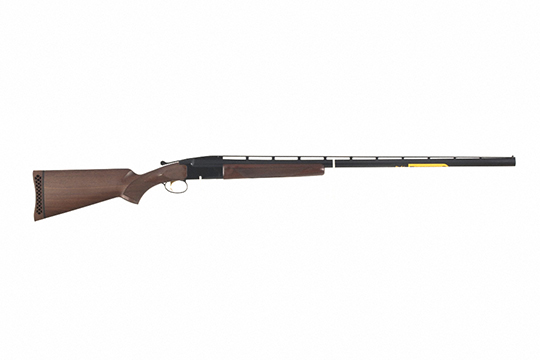
Doubles:
As you might imagine, a “double” shotgun, though operating with the same break action as the single shot, has two barrels, allowing two shots to be fired at game or target before being required to be reloaded. Though to today’s shooter this may seem rather insignificant, in the 1800s it represented a 100% increase in the rate of fire. Hunters could now fire a second time at missed game or be able to take multiple birds from a flock.
The two types of doubles are typically referred to as the side-by-side and the over/under. The first doubles were made with a side-by-side action, meaning that the barrels are oriented next to one another- “side-by-side” and were first muzzle loading, then breech-loading with a black powder, brass cartridge. When people speak of a “classic double,” this is the gun they are usually speaking of. Though not as common today, there are still many side-by-sides (often abbreviated as SxS) on both the new and used market.
Most often, a side-by-side is a “field” gun, and most commonly an upland gun- likely from their long history in the upland fields of Great Britain to the quail fields of Georgia. As the great depression subsided, many sportsmen took to the fields with new, American-made “doubles.”
Lower priced side-by-sides on the market come from CZ-USA in their Bobwhite and Sharptail models and the Stoeger “Uplander.”

If your budget can stretch a little bit, The Dickinson “Plantation” model runs around $1900.00. The Beretta Silverhawk, off the market for 30 years -then added and removed again- are good bargains on the used market, as are some of the AH Fox’s and Stevens SxS’s. At the higher end, both Purdy and Holland and Holland have been known for their double rifles and shotguns for over 100 years. You’d better have a hefty bank account for these works of firearms art, as many cross well into the six-figure range.
In 1926, John Moses Browning was again awarded the first patent for a new type of double- the Over/Under. The barrels, rather than being next to one another, are stacked on top of each other. The American market embraced the over/under, so much so that the double barrel market is dominated worldwide by the over/under, but especially so here in the USA. As with the side-by-side double, the over/under’s initial home was in the upland game fields. While you may never see a side-by side on the trap range, many over/unders are designed specifically for Trap and Double Trap.
In addition to Browning and their lines of field double shotguns, the Citori and the Cynergy, there are many other manufacturers in this space that make fine firearms from the several hundred to the ten and even hundred thousand dollar range. The popularity of this style of firearm means that there are many manufacturers with numerous models filling out the space.
On the lower end of the price range are over under field guns that are excellent hunting guns for a rather good value such as the Stoeger Condor, Stevens 555, and the Mossberg Silver Reserve. A slight move up will put you in the neighborhood of a Legacy Sports Pointer, CZ-USA Drake or All-Terrain. or the Tristar Upland Hunter. A bit more will put you into Dickinson’s fine shotguns, many of which have a case-hardened finish and high-grade walnut stocks.

The Beretta 686, 690, and SL3 models are fine examples of craftsmanship and function, at a mid-level price, as is Benelli’s 828U and take us up another rung on the price ladder, but nowhere near the top.
At the higher end of the spectrum of over/unders are the Italians, British and Germans, with names like Perazzi, Fausti, Caesar Guerini, Kolar, Krieghoff, Purdey and, again, Holland & Holland.
In addition to the over/under prominence on the trap range, another shooting sport- “Sporting Clays” sees more than half of the sport’s top pros, and especially those that shoot on an international level, choosing a shotgun in the over/under flavor. Many of these guns do double-duty as upland guns as well- bringing an excellent value. Browning’s CXT is designed specifically with the clays/upland shooter in mind with features to ensure top performance in both. Other top choices in the crossover world are the Fabarm Axis, Zoli Z-Sport and the Blaser F3 Vantage.
In 1893, (yes- prior to the introduction of the over/under) the Model 1893 Winchester was designed by John Browning. It has several revolutionary features and a different type of styling and handling. It was also the very first pump action shotgun in the world. You can’t go very far in the firearms world without stumbling across Browning‘s name – he has numerous advancements and patents, including the 1911, .45 caliber handgun, the pump action shotgun, the over/under shotgun, as well as the very first semi-automatic shotgun to his credit.
GunBroker.com Product Spotlight Videos
Pump Action Shotguns
Pump action shotgun’s opened up a great deal of potential for the average hunter. Coming from, first, single shot shotguns then on to doubles, the pump action was the first shotgun to be able to hold more than two rounds at a time. The first models and many models today can hold five -some of them even more.
Though you will see the occasional pump action shotgun on the trap range, and more than a few hunters taking their pumps to the sporting clays range, the pump action shotgun was designed for ultimate reliability in the field-and that reliability has also been adapted and modified to become utilized as a highly effective shotgun for the military, law-enforcement, and even Joe and Susie homeowner who want to secure their home.
Winchester might lay claim to the first pump action, and their Winchester Model 12 was one of the first highly popular sporting shotguns to hit the market. The title of the most popular sporting arm, however, goes to none other than the venerated Remington Model 870 pump.
It is the second most sold and owned firearm in the entire world.
While there are many versions of pump shotguns, the three most popular brands are the above Remington 870, the Mossberg Model 500 and the Winchester 1300 (used market) and the new SXP. Benelli also throws its hat into this arena with the Benelli Nova Pump- each available in numerous “flavors” to suit their need- from plain wood-stocked and blued barrels and actions meant for the field to camo synthetic hunting models to ones that have extended magazines, collapsible stocks and short barrels, ghost-ring sights and picatinny rails for the installation of numerous accessories.
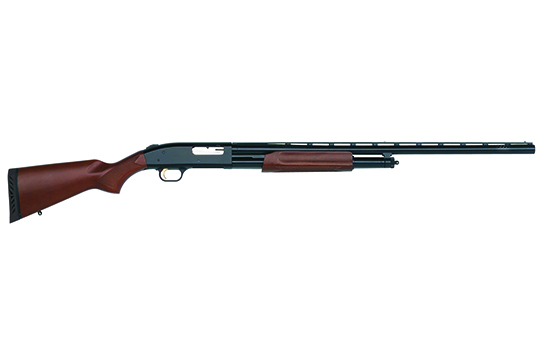
Semi-Automatic Shotguns
In 1900, John Browning, (yes, that same guy…) patented a new design for a semi-automatic shotgun – the Browning Auto Five (A5). He initially offered this firearm to Winchester corporation, who refused to meet the terms he set. Browning then tried to sell his design to Remington, but The president of Remington, with whom he wish to do business, became ill and died of a heart attack prior to Browning being able to sell him his idea. That began the shotgun relationship with Fabrique Nationale in Belgium, whom Browning had done business with on several of his other designs.
Eventually, the design was licensed to Remington as the Remington Model 11 and to Savage as the Savage Model 720. All were mechanically the same gun.
Known as a “long recoil” action, the Auto 5 was a staple in the gun cabinet of many waterfowlers in the early 20th century.
There aren’t quite as many semi-automatic firearms in the field as there are pumps, but the gap is very rapidly narrowing. Semi-automatics have a distinct advantage in that their action, by its nature and design, reduces the amount of recoil the shooter feels because it uses a portion of that recoil in order to cycle the action. Another distinct advantage over a pump is that it does not require any other mechanics in order to fire your second, third (And subsequent fourth, fifth, and sixth) shots. With each pull the trigger, a single round is fired and the next round loaded into battery ready to fire with another pull of the trigger.
Semi-automatics are found everywhere. On the trap range, on the sporting clays field, in upland fields chasing pheasants, and in perhaps their most often used position, in blinds and fields in the hands of hunters pursuing ducks and geese. Like the pump, the semi auto is often chosen in a tactical arrangement and used my law-enforcement, military, tactical shooting competitors, and for home and personal defense.
Browning was the first, but every manufacture these days seems to have at least one type of semi-automatic shotgun. TriStar has their “Viper” line, a lower price point but excellent value semi-automatic firearm. CZ USA came out with some new models this year as well- the 712 and 720, as well as their brand new inertia-action 12 gauge, the Model 1012.
Mossberg’s SA 20 and 930 series are great buys, and their 940 JM Pro is making waves in the tactical competition realm since it was introduced last year. I would be remiss to neglect mentioning the Remington Model 1100 and 11-87, two of the best-selling semi-automatic firearms in the world. Both are highly affordable and have an excellent history of field and competition performance.

All of Browning, Winchester, and the majority of the above mentioned semi-autos operate via a gas action – a portion of the expelled gases from the fired shotshell are diverted and used to cycle the action of the shotgun. In the 1980’s, Benelli was awarded a patent on a novel, new sporting action – the “inertia“ action. This action has very few moving parts and utilizes, as the name suggests, the rearward inertia of the shotgun after firing to compress a spring that then decompresses and cycles out the empty shell, picking up another from the magazine and loading it with the assistance of another spring located either in the stock or forend of the firearm. This action and its tremendous reliability has made Benelli often the top choice when choosing a new duck or goose gun- but they have an entire lineup of sporting and upland guns as well.
Keep in mind, we have plenty of other resources and products available at GunBroker.com, including information for new buyers and sellers. Stop by our site to learn more and find the right deal for you!




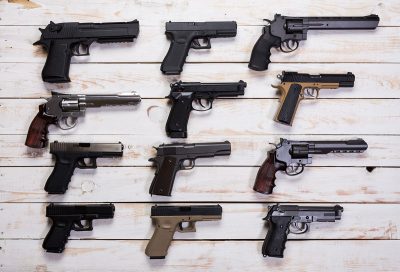

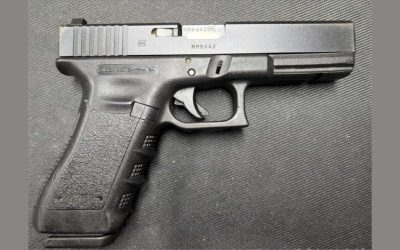
![Gun Review: Remington 700 XCR Rifle [Video]](https://content.gunbroker.com/wp-content/uploads/2020/02/7ch4EUa1-1280-400x225.jpg)
